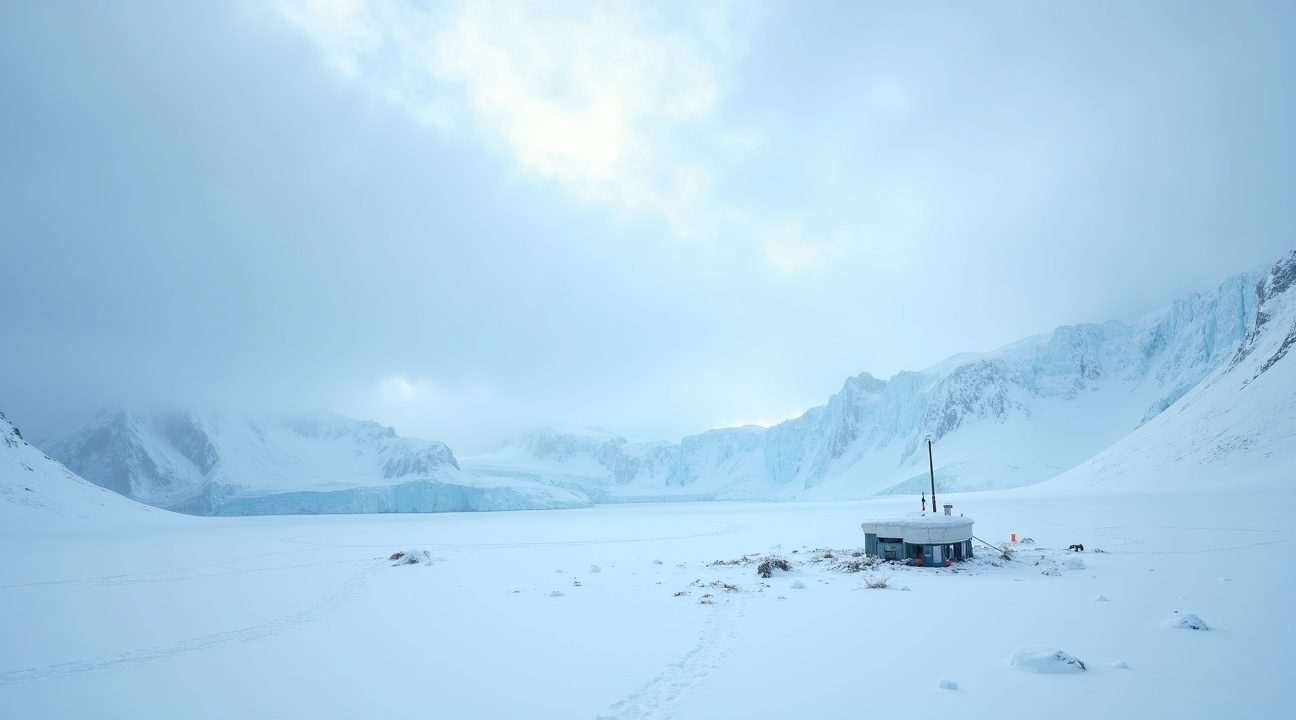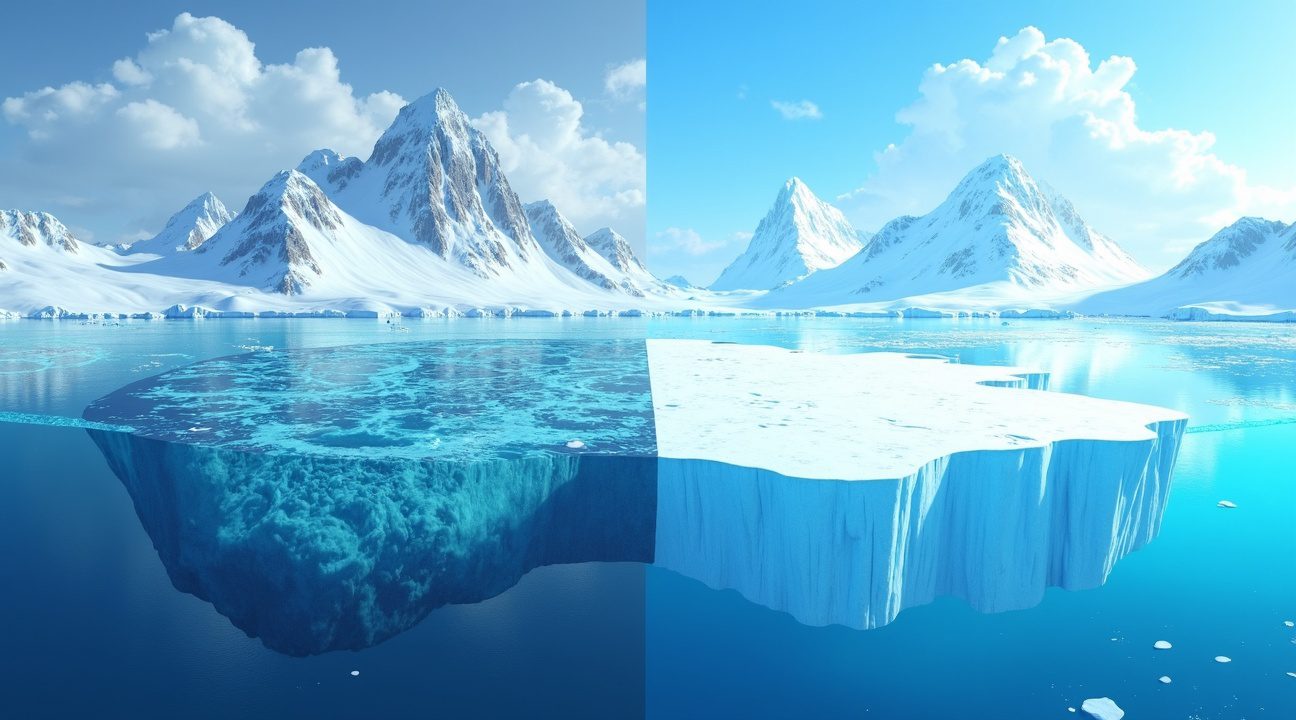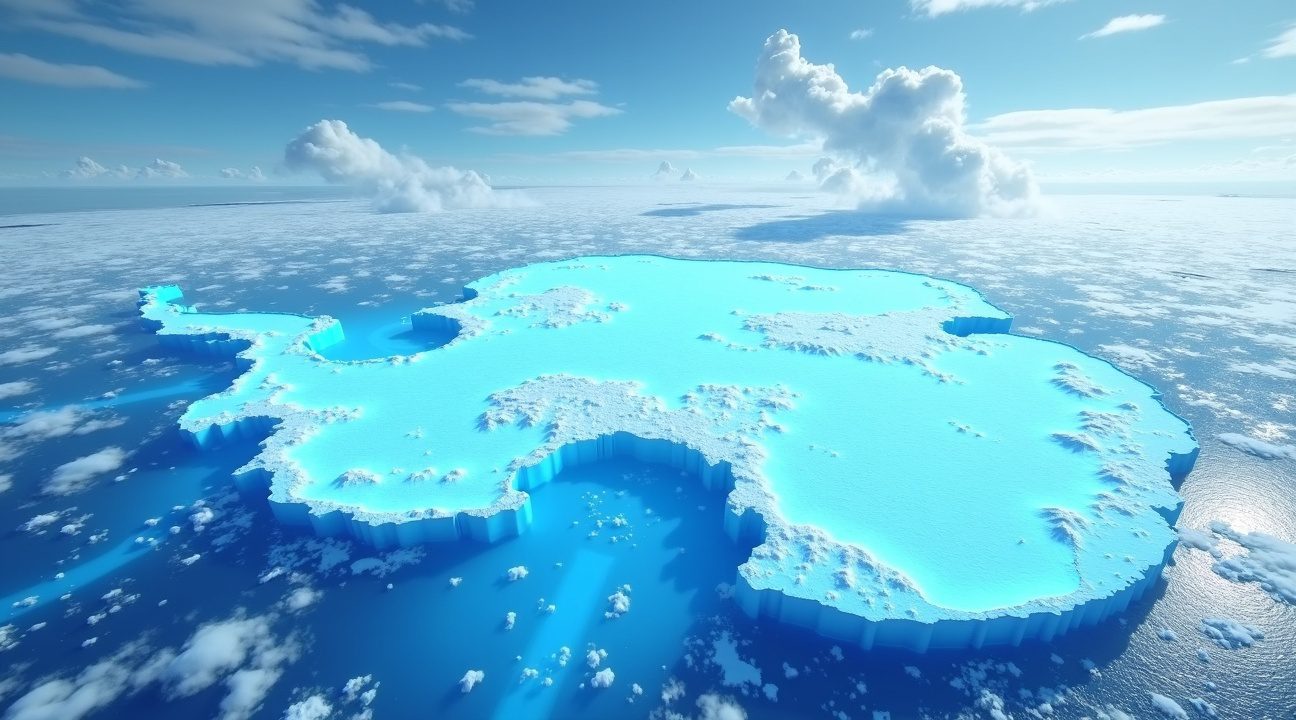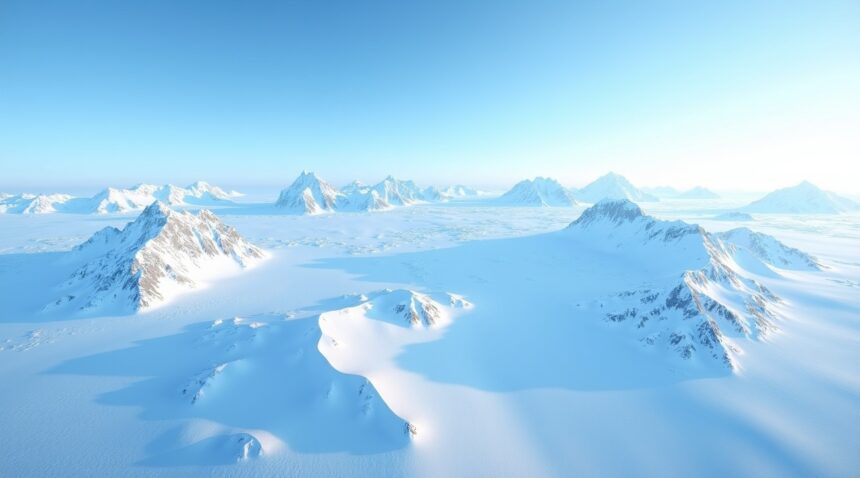Antarctica shocked the global scientific community by accumulating nearly 100 billion tons of ice annually between 2021 and 2023.
This dramatic phenomenon reversed decades of consistent ice loss and temporarily reduced global sea level rise by approximately 0.3 millimeters per year. Utilizing advanced GRACE satellite technology, researchers identified this unusual ice accumulation, most of which occurred in East Antarctica’s Wilkes Land and Queen Mary Land areas. As a result, climate scientists are now reassessing their models of Antarctic ice behavior in light of this unprecedented event.
Key Takeaways
- Antarctica gained around 100–108 billion tons of ice per year from 2021 to 2023, reversing its typical trend of contributing to sea level rise.
- East Antarctica was the epicenter of the accumulation, particularly within the Totten Glacier basin, Denman Glacier region, and Wilkes Land—areas previously known for ice loss.
- The temporary ice gain was driven by exceptional snowfall due to unique weather conditions, increased atmospheric moisture, and shifting wind patterns that funneled precipitation into glacier zones.
- This event is likely temporary and not indicative of a long-term shift in climate, since the root causes of ice loss in Antarctica are still active.
- Scientists emphasized the complexity of Antarctic ice behavior, noting that weather anomalies can mask the broader warming trends and offer key insights for improving climate prediction models.
The findings underscore the need to understand transient weather effects in polar regions. While this discovery provides a brief reprieve in sea level rise, it also adds a critical dataset for researchers working to fine-tune global climate models. For more details about the technology behind this discovery, you can explore NASA’s GRACE mission.
Antarctica Gains 100 Billion Tons of Ice in Stunning Climate Reversal
Antarctica delivered one of the most unexpected climate developments in recent memory between 2021 and 2023, when the continent gained nearly 100 to 108 billion tons of ice annually. This dramatic reversal caught scientists off guard and temporarily altered global sea level calculations in ways researchers hadn’t anticipated.
The massive ice accumulation represents a complete departure from Antarctica’s typical behavior patterns over the past several decades. Instead of contributing to rising sea levels, the continent actually helped offset global sea level rise by approximately 0.3 millimeters per year during this remarkable period. Climate scientists found themselves recalibrating their understanding of Antarctic ice dynamics as they processed this unprecedented data.
Satellite Technology Reveals the Unexpected
GRACE and GRACE-FO satellite missions provided the precision measurements that detected this extraordinary ice gain. These sophisticated gravimetry instruments track changes in the Antarctic Ice Sheet’s mass by monitoring variations in Earth’s gravitational field. The technology allows researchers to measure ice mass changes with remarkable accuracy, revealing shifts that would otherwise remain hidden beneath Antarctica’s vast ice cover.
I find it fascinating how these satellite systems can detect gravitational anomalies caused by ice mass changes thousands of miles below. The GRACE satellites essentially weigh the continent from space, providing data that traditional ground-based measurements simply cannot match for such a massive and remote region.
East Antarctica Leads the Ice Accumulation
The most significant ice gains concentrated in East Antarctica, particularly across the Wilkes Land and Queen Mary Land regions. These areas experienced unprecedented accumulation patterns that transformed major glacier basins throughout the continent’s eastern sectors.
Key areas showing dramatic ice increases include:
- Totten Glacier basin, which typically shows ice loss trends
- Denman Glacier region, known for its deep below-sea-level ice
- Moscow University Ice Shelf area, covering extensive coastal zones
- Vincennes Bay glacial systems, affecting multiple drainage basins
East Antarctica’s surprising ice gain challenges previous assumptions about this region’s stability. Scientists had generally viewed East Antarctica as relatively stable compared to West Antarctica’s more volatile ice sheets. However, this recent accumulation demonstrates that even the continent’s supposedly stable regions can exhibit dramatic variability.
The Wilkes Land sector alone contributed substantial portions of the overall ice gain, with some individual glacier basins showing increases equivalent to several years of typical ice loss. Queen Mary Land followed similar patterns, suggesting that large-scale atmospheric or oceanic changes influenced broad swaths of the continent simultaneously.
This climate anomaly raises important questions about Antarctica’s role in global climate systems. While temporary ice gains might seem beneficial for sea level concerns, scientists emphasize that understanding the underlying mechanisms driving these changes remains critical for accurate future projections.
The phenomenon also highlights the complexity of Antarctic ice dynamics and the challenges inherent in predicting long-term trends based on historical data alone. NASA scientists continue developing advanced monitoring techniques to track such variations across Earth’s polar regions.
Rather than celebrating this temporary reprieve from ice loss, researchers focus on understanding whether these gains represent natural variability or indicate shifting climate patterns that could affect future ice sheet behavior. The accumulation period demonstrates that Antarctica can still surprise scientists, even with decades of satellite monitoring and climate research behind them.
Current data suggests this ice gain period represents an anomaly rather than a new trend, but scientists continue monitoring the continent closely to determine if similar patterns might emerge again or if Antarctica will return to its previous ice loss trajectory.
https://www.youtube.com/watch?v=pHT6WsgTAX8
Rare Weather Event Behind the Massive Ice Accumulation
Antarctica’s unexpected ice gain stems from a remarkable weather phenomenon that caught climate researchers off guard. The continent experienced anomalous precipitation levels that far exceeded typical patterns, with snowfall concentrating heavily in glacier basins that had been consistently losing ice for years.
Atmospheric Conditions Drive Record Snowfall
The dramatic ice accumulation resulted from shifts in atmospheric moisture patterns and wind systems across Antarctica. Scientists observed that warmer global temperatures paradoxically contributed to this ice gain by increasing the atmosphere’s moisture-holding capacity. When this moisture-laden air reached Antarctica’s frigid interior regions, it produced exceptionally heavy snowfall events that persisted throughout much of the measurement period.
Wind pattern changes played a crucial role in directing this enhanced precipitation toward specific areas. The atmospheric circulation shifted in ways that channeled moisture-rich air masses directly over key glacier basins, creating conditions perfect for sustained snow accumulation. These same basins had been experiencing accelerating ice loss in previous years, making this reversal particularly striking to researchers monitoring NASA scientists and their ongoing climate studies.
Temporary Nature of the Phenomenon
Climate scientists emphasize that this massive ice gain represents a rare weather event rather than a fundamental shift in Antarctica’s long-term trajectory. The net snow accumulation for the year ending February 2025 reached levels far above average, creating a temporary buffer against the continent’s usual contribution to rising sea levels.
However, researchers caution against interpreting this single year’s data as evidence of a climate trend reversal. The underlying factors driving Antarctica’s long-term ice loss remain unchanged, including warming ocean temperatures and shifting atmospheric patterns that typically promote ice sheet instability. This year’s exceptional snowfall appears to be an outlier event driven by specific meteorological conditions that aligned to produce unprecedented precipitation levels.
The concentration of snowfall in previously ice-losing regions created particularly dramatic results. Glacier basins that had been shrinking for decades suddenly showed substantial mass gains as heavy snow accumulated faster than existing ice could melt or flow toward the ocean. This temporary reprieve provided scientists with valuable data about how extreme weather events can influence ice sheet dynamics, even as the broader warming trend continues to shape Antarctica’s future.
Understanding these atmospheric moisture dynamics helps researchers refine climate models and better predict future variations in ice sheet behavior. While this year’s ice gain offers a brief respite from Antarctica’s contribution to sea level rise, scientists maintain that such events don’t alter the fundamental physics driving long-term ice sheet changes in a warming climate.

How This Gain Compares to Decades of Ice Loss
To understand the significance of this recent ice gain, it must be placed within the broader context of Antarctica’s long-standing trend of ice loss. From 2002 to 2023, the continent experienced an average annual loss of approximately 150 billion metric tons of ice. In light of this pattern, this year’s 100-billion-ton gain is especially notable. Despite this gain, Antarctica’s net ice loss over the past two decades adds up to around 1.85 trillion tons.
Much of this persistent ice loss has been driven by the acceleration of major ice streams in West Antarctica, intensifying concerns about long-term impacts on global sea levels.
The Dominant Pattern of West Antarctic Ice Loss
West Antarctica is the primary area of concern due to aggressive melting largely attributed to the intrusion of warm ocean waters. These waters speed up melting rates beneath key outlet glaciers, weakening their structural integrity and increasing the rate at which ice flows into the ocean.
Two glaciers are particularly central to this process:
- Pine Island Glacier
- Thwaites Glacier
These massive glaciers have seen notable acceleration and retreat over the years, making them significant contributors to sea level rise. Though East Antarctica has shown some increases in ice mass due to higher snowfall, these gains have not been large enough to offset the losses from the west—until now. This year’s continent-wide gain suggests a rare occurrence where East Antarctic accumulation may have temporarily outweighed Western losses.
Research spanning from 1992 to 2017 has found that the Antarctic ice sheet contributed an estimated 7.6 mm (0.30 inches) to global sea level rise. Considering the total observed sea level rise during that period, this is a significant contribution and signals the importance of Antarctica in global climate dynamics.
The process behind this involves a destabilizing feedback loop, where warmer waters reach grounding lines—key points where glaciers meet the sea. This intrusion melts ice from below and increases discharge rates. This phenomenon is especially intense in the Amundsen Sea sector, home to both Pine Island and Thwaites glaciers.
Understanding this long-term trend is essential for interpreting whether the recent gain is a brief anomaly or the beginning of a more sustained change in Antarctica’s mass balance. While it may seem dramatic, one year of ice gain—amounting to only about two-thirds of the typical annual loss—does not overshadow the broader trend of rapid ice depletion. The NASA scientists’ research remains vital for monitoring these shifts and assessing their implications for future sea level rise and climate policy.

What This Temporary Reversal Means for Climate Science
This temporary ice gain has sparked intense debate among climate researchers, raising fundamental questions about how shifting weather patterns and climate change may produce short-lived reversals within broader long-term trends. The phenomenon challenges conventional expectations while simultaneously reinforcing the complex nature of climate systems.
Experts caution strongly against interpreting the recent gain as a permanent or stabilizing trend. Global warming remains the dominant force driving ongoing ice sheet decline across Antarctica. Dr. Sarah Mitchell from the International Climate Research Institute emphasizes that this short-term anomaly doesn’t alter the trajectory of long-term decline that characterizes Antarctic ice loss patterns.
The unexpected gain is considered by many researchers as a symptom of a changing climate rather than evidence against it. Greater atmospheric moisture from a warmer world can lead to rare, intense snowfall events even in regions experiencing overall net loss. This paradoxical relationship demonstrates how climate change can temporarily mask its own effects through increased precipitation.
Understanding the 2024–2025 Melt Season Dynamics
The 2024–2025 melt season began with above-average melt extents, creating initial concerns among monitoring teams. However, conditions shifted dramatically as weather patterns cooled, especially over the Antarctic Peninsula. This rapid decrease in melting activity contributed significantly to the net ice accumulation observed throughout the year.
Climate scientists point to several key factors that explain this unusual pattern:
- Enhanced snowfall driven by increased atmospheric moisture content
- Cooler temperatures during critical summer months that reduced typical melting
- Shifted wind patterns that altered heat distribution across the continent
- Ocean current variations that affected coastal ice interactions
The temporary nature of these conditions highlights why researchers emphasize the importance of distinguishing between short-term fluctuations and long-term climate trends. While the ice gain provides valuable data for understanding Antarctic climate dynamics, it doesn’t fundamentally alter projections for future ice loss under continued global warming scenarios.
Understanding this reversal helps scientists refine their models for predicting how Antarctic ice sheets will respond to varying climate conditions. The data collected during this period offers insights into the complex feedback mechanisms that govern ice accumulation and loss processes. These findings contribute to more accurate assessments of how atmospheric conditions influence polar ice dynamics.
Climate researchers stress that this event should be viewed within the context of Antarctica’s overall warming trend. The continent has experienced significant ice loss over the past several decades, with accelerating rates in many regions. This temporary gain represents a brief interruption in that pattern rather than a fundamental shift in climate trajectory.
The scientific community continues monitoring conditions closely as the next melt season approaches. Early indicators suggest that normal ice loss patterns may resume, reinforcing the temporary nature of the recent accumulation. This ongoing observation helps researchers better understand the variability inherent in Antarctic climate systems while maintaining focus on the broader trends that define long-term climate change impacts.
Research teams are particularly interested in how this event relates to global climate patterns, including El Niño and La Niña cycles that influence precipitation and temperature patterns across the Southern Hemisphere. These connections help explain how temporary weather anomalies can produce surprising results even within the context of ongoing climate change.

Sources:
LiveNOW from FOX – “Antarctica Gains Ice for First Time in Decades, Reversing Loss”
NASA Climate – “Antarctic Ice Mass Loss 2002–2023”
Wikipedia – “Antarctic ice sheet”
Antarctic and Southern Ocean Coalition (ASOC) – “Ice Gain in Antarctica: Cool Story, Still a Hot Planet”
U.S. Environmental Protection Agency (EPA) – “Climate Change Indicators: Ice Sheets”
National Snow and Ice Data Center (NSIDC) – “Antarctic Ice Sheet 2024 to 2025 Melt Season: Fast Start, Early End”


